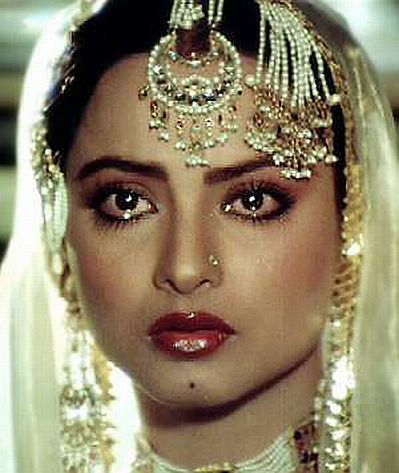
Ray made Parash Pathar (The Philosopher’s Stone) in late 1957 during a break in the shooting of Jalsaghar (The Music Room) enforced by the lead actor, Chhabi Biswas’s absence (Biswas was away in Berlin to receive an award). Based on a short story by the renowned Bengali writer, Rajsekhar Basu, Parash Pathar was Ray’s first attempt at comedy. Basu, who wrote under the pseudonym of ‘Parasuram’, was already a household name in Bengal; he was a prolific creator of verses, short stories, plays, novels, and had also authored a very comprehensive Bengali dictionary.
In a letter to Marie Seton, Ray describes Parash Pathar as “(it is a) sort of combination of comedy, fantasy, satire, farce and a touch of pathos.” Tulsi Chakraborty (who had earlier played the grocer-teacher in Pather Panchali) as the protagonist Paresh Chandra Dutta seems to embody perfectly Basu’s humor and Ray’s satire. The actor was already a familiar face in Bengali cinema, having acted in countless melodrama films. With a pair of eyes “as bulbous as a frog’s which he opens wide with every emotion known to Man” (Robinson), Chakraborty brings to life the humble Bengali clerk both blessed and cursed by picking up ‘the stone that turneth all to gold’. Paresh initially transforms only a few household items, ‘a little something’ for his and his wife’s old age. But soon greed and the craving for limelight seduce him, and the humble clerk dreams of a place among Calcutta’s elite. Against his better instincts, Dutta decides to keep the stone. When he receives an invitation to his first cocktail party, he is overjoyed – he has been finally accepted in the exclusive clique of the rich and famous. However, incensed by the snooty disdain of the ‘Brown Sahibs’ (anglicized Indians) at the party, an inebriated Dutta decides to reveal his secret. What follows is a hilarious account of Dutta’s ordeal.
Though the dominant mood of the film is Paresh Dutta’s innocent delight in being important, Ray’s satire is often biting. His contempt for the rich and powerful in Indian society is evident in his treatment of Calcutta’s elite in the cocktail party scene. Opinion remains divided whether the scene is successful or not. Some, like Bansi Chandragupta, Ray’s art director, are critical of the scene – “Satyajit has preconceived notions about the rich… They appear as caricatures and types rather than people. In Parash Pathar he has an unusual disgust for alcohol and drunkards. It is this prejudice against drink that has influenced this scene.” (Bansi Chandragupta in Andrew Robinson’s Satyajit Ray: The Inner Eye)
For the cocktail party scene, Ray assembled some of the Bengali film industry’s most accomplished actors (Chhabi Biswas, Pahari Sanyal, Kamal Mitra) and for the Bengali viewer it is often a treat to watch this eclectic ensemble. For Ray shooting the scene was an equally enjoyable experience – “It was a great experience… Everyone had to be given something to do at that point, so that everyone would be happy. It was all equally apportioned – the various businesses – except for Chhabi Biswas. I told him, ‘You have just done something very important for me (Jalsaghar) so I’ll neglect you. So don’t mind.’ His very presence was enough.” (Satyajit Ray in Andrew Robinson’s Satyajit Ray: The Inner Eye)
Ray was asked by the Censor Board to make black the white ‘Gandhi cap’ worn by Dutta after he becomes rich since the ‘Gandhi topi’ (Gandhi cap) is associated with politicians belonging to the Congress Party (though Gandhi himself never wore one). By insisting that Dutta wears it to only hide his baldness, Ray got permission to leave it as it was.
Andrew Robinson considers Parash Pathar “among Ray’s best work, were it not for some rough edges which betray the speed at which it was shot.” (Robinson, Satyajit Ray: The Inner Eye) Unfortunately the film did not receive a very enthusiastic response. When first screened at the Cannes Film Festival in 1958, Parash Pathar was received with ‘amused indifference’, with critics and audience preferring the Apu films to this modest tale. The film’s humor translates only partially to a non-Bengali audience. Part of the problem lies in its nuanced portrayal of Bengali social life, an ignorance of which reduces the clever caricaturing of the ‘Brown Sahib’ to merely hamming.
As Robinson puts it: “To appreciate Parash Pathar, requires some feeling for the vacuousness and pretentiousness of the Calcutta rich and the nouveau riche, for the Indian obsession with gold, as well as for the struggling Bengali clerk – the downside of the Bengali Renaissance – those thousands upon thousands of Bengalis who have Apu’s dreaminess and frustrations but not his talents, and who must get by through deference to office superiors.” Though some non-Bengalis have appreciated it, the general reaction is summarized by Eric Rhode’s comment in Sight and Sound – ‘mannered facetiousness’. Parash Pathar remains one of Ray’s least recognized works in spite of its popularity in Bengal. The film was nominated for the Golden Palm at the Cannes Film Festival in 1958.




No comments:
Post a Comment